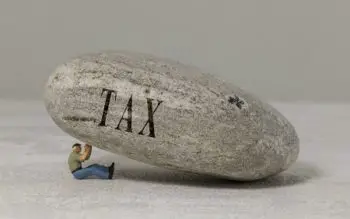
Does the IRS forgive tax debt? Internal Revenue Service (IRS) forgiveness is real. The reason is they realize not everyone is able to pay their taxes. So, they have programs to help people pay as much of their obligations as they can.
- The Fresh Start Initiate makes it easier to pay back taxes.
- Under the initiative two programs, OIC and PPIA, offer forgiveness
These programs are a major change from the IRS’s historical collection practices. If you owe taxes it gives you the opportunity to settle it and move on with your life.
Click to Open Outline
What is the Fresh Start Program?
The Fresh Start initiative is a series of changes to the tax code to make it easier for people to pay their back taxes. Just like the authorities have many ways to collect taxes, they have programs to help alleviate the burden, like lifting asset levies and property liens. We are concerned, though, with debt forgiveness and they have two programs that may help:
- Offer in Compromise
- Partial Payment Installment Agreement
Each of these has benefits and drawbacks. Which is better for you depends on your situation.1
Offer in Compromise (OIC) to Forgive IRS Tax Debt
An OIC allows you to settle with for less than the full amount you owe. It’s only for those who have a hardship. They consider your ability to pay, income, expenses and assets, and they say the offer “represents the most we can expect to collect within a reasonable period of time.” Requirements for eligibility include that you:
- Are not in a bankruptcy proceeding
- Filed all required federal tax returns
- Made all required estimated payments
- Submitted all required federal tax deposits
You can use the OIC pre-qualifier to see if you are eligible for the program. After that, you need to submit your offer. You can find instructions and all the forms you need in the OIC Form 656 Booklet.2
If Your Offer is Accepted
- You must meet all terms listed in Section 7 of Form 656.
- Any refund due during the year the IRS accepted your offer will go toward your tax debt.
- The IRS will not release any federal tax liens until you satisfy the offer terms.
If Your Offer is Rejected
- You may appeal within 30 days using the Request for Appeal of OIC Form 13711.
- The IRS Independent Office of Appeals offers additional assistance with your appeal.
Advantages and Disadvantages of OIC
An OIC offers a final solution to your problem. If you qualify you may only pay pennies on the dollar, and once you meet your agreement terms the issue is resolved. If you owe a lot of money with limited income this may be a very good option for you, especially since they increased the acceptance rate.
The disadvantages, though, are significant. As stated before, your acceptance depends on if the government believes they can collect from you. If the numbers demonstrate that they can, they will reject your offer. That’s bad because it can take years for the IRS to approve you. Also, the paperwork is extensive.
Some agents recommend that people apply while they know the authorities will reject them. They do this to get easy access to financial information. Once the IRS denies the request agents know exactly where to find assets.
Remember that the government wants as much money as they can get. They won’t make it easy to go through this process.
Partial Payment Installment Agreement (PPIA) to Forgive IRS Tax Debt
If you have insufficient assets to liquidate and you don’t have enough income to pay your tax bill in full you may qualify for a PPIA. The qualifications for this program are:
- Limited disposable monthly income
- Over $10,000 tax obligations
- Forms 433 and 9465
- No outstanding returns
- Not in bankruptcy
- No OIC in force
- Limited assets
You start by calculating your disposable income on Form 433. If you indicate a disposable income too high, then you risk defaulting. Finally, there is a $225 filing fee.
Advantages and Disadvantages of a PPIA
The IRS requires you to requalify every two years, and they usually ask for higher monthly payments when you do. The idea is to accept lower payments now hoping your financial situation improves and they can collect more later. This goes on until the statute of limitations runs out after 10 years.
On the plus side, it is much easier to qualify. One reason is that the agent-in-charge has more discretion to make a deal. Also, the process takes months instead of years. Finally, there is much less paperwork.
When Should You Apply for a PPIA?
Whether it is a good idea for you depends on your financial situation. Some things to consider are:
- What are your assets?
- How much disposable income do you have?
- Do you expect your income to increase over the next 10 years?
For most people, there are complex issues to consider. It is probably best to consult with a tax attorney to figure out what is your best option.
Final thoughts on Does the IRS Forgive Tax Debt
Does the IRS forgive tax debt? Yes, but they don’t want to. They give you two options that may forgive some of your liabilities. The PPIA requires you to give part of what you earn over ten years. The OIC takes some of the assets you own now.
While you may prefer the OIC, the IRS prefers a PPIA. They hope that your financial situation improves so they will get more money. Therefore, they make it easier to get a payment plan than a compromise offer.

